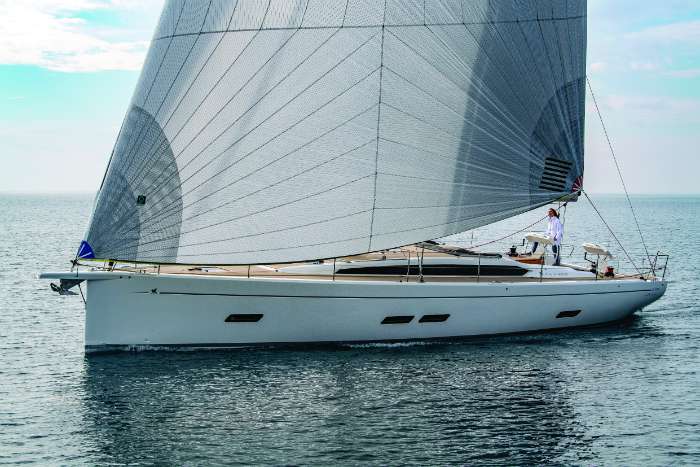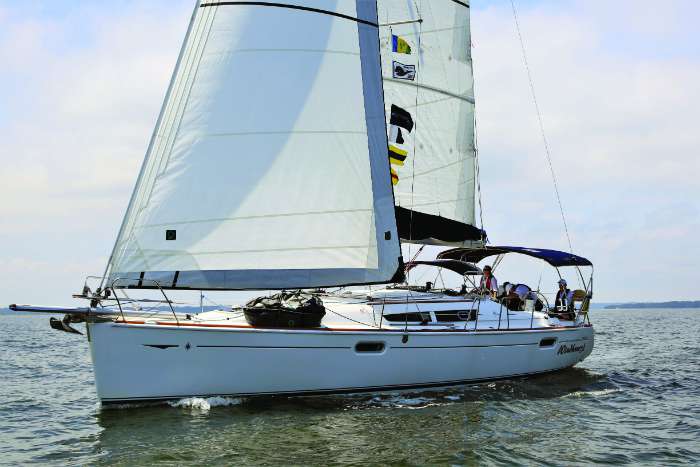Sailing More Effectively in Light Wind... the Cruisers Edition!
Yes, I know this is usually the “Racers Edge” column, but last month’s article on tips for light air racing drew requests from the other part of our sailing community. You may not race, but you still love to sail and don’t want to give it up just because it is summer and there are more light-air days. It is even harder for the cruising sailor to sail well in light air. The boats they are probably sailing are inherently hobbled. Beam, wetted surface, shallow draft, smaller rigs all make it more difficult. Finally, we have to remember that we are carrying our house around with us. One of the most critical factors in light-air performance as noted in last month’s column is horsepower-to-weight ratio. The bicycles onboard don’t help!

Specialty sails
As a sailmaker you knew I would bring this up. Yes, this is a wee bit self-serving, but you are going to need to look at your sail inventory. Generally speaking, I always recommend that for the one primary furling headsail you leave up all the time that you go as small as possible. On older boats with overlapping genoas a bigger sail makes tacking and trimming hard work. You want to go small to make your sailing easier.
On most modern boats the overlapping genoa has been eliminated (hooray!), and a large jib with minimal overlap is used. This of course creates problems in light air when we are starved for horsepower. Many with more traditional rig setups just put on the big genoa for the summer months. For the modern boat with smaller headsails, a specialty reaching sail, often referred to as a Code Zero, will be a huge asset. These “Code” sails come in all sizes and flavors, so you need to do some homework to figure what is best for your rig proportions and angles you want to optimize for.
Boats with big overlapping genoas don’t need specialty sails capable of upwind and close reaching work; they will need to address broader angles. For broader angles there is no substitute for an asymmetrical spinnaker. No working headsail or even specialty reaching sail will work when you want to really sail downwind in light air.
Upwind
Never easy at the best of times, going upwind in light air is hard. The reality is that most cruising boats will struggle, and the tacking angles will be wide. The thing to keep in mind is not to force it. The same mantra that I preach to racing sailors applies. Speed first, and then try to point. Start at a close reach and gradually trim sails in ever so slowly.
You will find your headsail is well eased from what you would use in medium conditions. Your mainsail should have plenty of twist (leech open at top). The top batten needs to be open to create flow. The top telltale should be flowing. Twist is created by easing the mainsheet and letting the boom rise. Once you have the top batten set, you can pull the boom up to the centerline with the traveler for maximum power. To help add power make sure halyard tension on both sails is not too tight. Ease the halyard until you get just the hint of horizontal wrinkles perpendicular to the luff.
Finally, in light air headsail telltales are critical. Hand steer using the telltales as a guide. Make sure they are flowing straight aft. If the inside telltale is lifting, you need to bear off. If outside telltales are spinning or both telltales are hanging down, you can head up or ease the sheet. Unfortunately, you have to pay constant attention and steer to the telltales if you are going to keep the boat in the groove.

Reaching
This is the easiest point of sail to generate speed in light air. From a close to a beam reach you will generate maximum power. The key is to make sure sails are not over-trimmed. Ease until they luff and trim just enough to take the luff out. For the headsail use the telltales as a guide. Trim until they stream straight aft. A powerful tool when reaching is to add a second sheet led to a block on the rail just slightly forward of normal upwind position. As the headsail is eased out, the load should be taken up by the outboard sheet. This allows the top of the sail to be trimmed in without over-trimming the whole sail. It also opens up the gap between the sails, allowing you to ease the mainsail further. Finally, add horsepower. This is where those specialty reaching (Code) sails are worth their weight in gold. They are trimmed just like any headsail.
Downwind
This is the hard part. The first thing you have to recognize is that you really can’t sail straight downwind in light air. In under 10 knots a displacement boat has to “tack” downwind even though this means extra distance. Heading up is the only way to generate the apparent wind that we need to fill our sails. How far you have to head up is a function of true wind velocity. A little bit of extra breeze can change that angle dramatically.
A simple test is to head up until the headsail fills and there is pressure on the sheet. You can bear off slightly once you build up apparent wind. If you get too low, the sheet will go soft and the headsail will begin to collapse. Obviously, this all works much better with a light, powerful asymmetrical spinnaker. Your heavy, all-purpose working headsail will not work. You will have to head way up to generate the apparent wind necessary to get it to lift and fill, and suddenly you will not be going downwind at all but will be back to reaching.
If you have the right tools and a little patience, light-air sailing can be a blast even when you are carrying your home with you!
Questions? Email [email protected]




